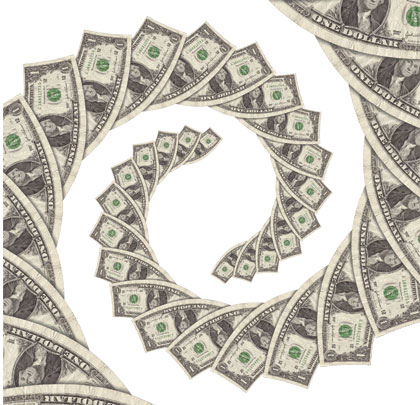When you need additional equipment for your business, there are numerous financing options out there. From loans to leases, the options can sometimes seem overwhelming.
Leasing may be an option you are interested in exploring but don’t know much about. There are several lease options you can choose from, including capital leases or finance leases and true leases or tax leases. You can lease new or used equipment. You can even sell equipment that you have and lease it back. All of the various lease types, while different, have a couple of things in common … they usually will allow you to get a piece of equipment with little money down and with a lower payment than a traditional loan.
IMPROVING CASH FLOW
Leasing can improve your company’s cash flow by providing lower payments than a traditional loan for the same equipment. Most leases have a lower payment because the lessor has assumed a residual value in the equipment. So you are only paying back a portion of the value of the equipment—the portion you are using. Also, leasing companies will oftentimes provide seasonal payment plans, so you can have some payment relief during the slow season or seasons. Generally, equipment leases provide much greater flexibility around your ability to make payments than traditional financing.
KEEPING EQUIPMENT MODERN
New equipment offers lower maintenance costs and usually has warranties that protect against large unexpected repairs, giving you the benefit of less downtime for repairs and reduced maintenance costs. New equipment also makes it easier to attract top quality employees that are looking to work with the best equipment, making hiring easier. To keep your fleet modern and cost efficient, you might want to look at a comprehensive leasing program that provides for lease expiration at or near warranty expiration. Having a modern, efficient fleet could very well be more cost-effective in the long run.
GENERATING CASH
Leasing doesn’t just help you acquire new equipment or equipment that is new to your business, it can help you raise working capital or money to buy additional equipment. A sale and leaseback transaction is one where a leasing company buys your existing equipment and leases it back to you. You get the cash that is locked up in your equipment and you still continue to use your equipment as if you owned it. Most sale and leasebacks look a lot like a lease for new equipment; they are typically 3 to 7 years in length and the terms look the same as if you have acquired new equipment—it’s just your equipment providing you with much needed cash.
REFINANCING EXISTING DEBT
Another option you have to improve your monthly debt payments, and in some cases to generate cash, is to refinance debt, which is secured by your equipment. Refinancing with a capital or finance lease can lower your monthly payments by as much 50 percent. The leasing company essentially stretches out your payments in order to reduce your monthly cost. This requires detailed knowledge of your equipment and its value over time. Generally banks will only finance new equipment and for relatively short terms. A leasing company’s knowledge of your equipment allows them to more closely match the term of your lease to the life of your equipment—all resulting in a lower monthly payment for your business.
UNDERSTANDING THE FINE PRINT
Lease contracts are usually “hell or high water” obligations to pay rentals. This simply means that the lessee has signed up to make the payments and they cannot get out of the lease if the equipment breaks. If you decide you don’t need it anymore, the lease can be terminated and most leases will contain a Termination Value Schedule, which spells out the amount that will need to be paid in order to terminate the lease. These leases are also called “net leases,” which means the lessee agrees to pay all taxes, insurance premiums, maintenance costs, and any other expenses that would be associated with owning the equipment. Warranties associated with the equipment are transferred to the lessee and the lessee provides the appropriate insurance coverage for the equipment. So, while your lessor may own your equipment, you have to think of it as your equipment and be prepared to pay the same operating costs that you would have if your company owned the equipment.
LEASING TIPS
Understanding whether or not leasing works for your situation is relatively simple. Focus on your monthly payment and the payment structure that is being offered to you by the leasing company. Cash flow in business is one of the most important variables that you need to control. Nothing else matters if you cannot service your debt payments from your monthly cash flow. So, if a leasing company can offer you a payment plan that can be serviced by your company’s monthly cash flow, then it’s a transaction that probably makes sense. You could very well be offered a traditional loan that is less expensive in total than the lease, but the cash flows don’t work, which makes the total cost irrelevant. Since equipment lessors are willing to make residual assumptions in equipment, provide seasonal payment structures, or in some cases even skip payments, you should be able to find a lease financing option that will help you to profitably acquire new equipment or turn your existing equipment into much needed cash. ■
About The Author:
Phil Carlson is president and CEO of Nations Equipment Finance and has more than 30 years of commercial lending and leasing experience. Nations Equipment Finance is a national specialty commercial finance company providing equipment-based term loans and leases across a variety of asset types and industries. For more information, visit www.nationsequipmentfinance.com.
_________________________________________________________________________
Modern Contractor Solutions, December 2013
Did you enjoy this article?
Subscribe to the FREE Digital Edition of Modern Contractor Solutions magazine.

A Guide for Leasing Equipment


